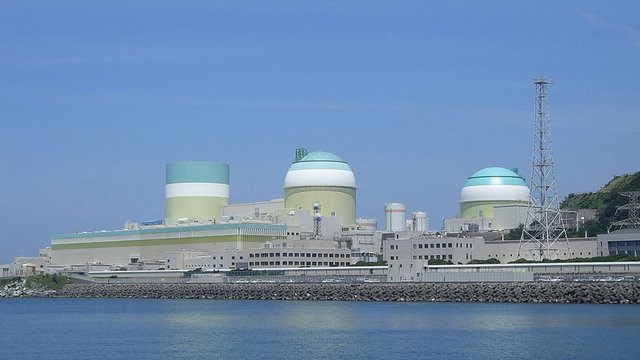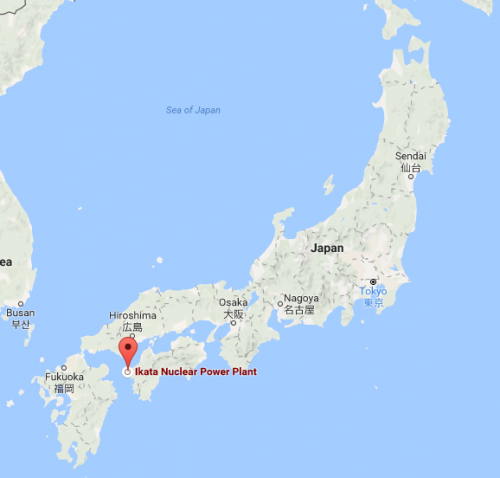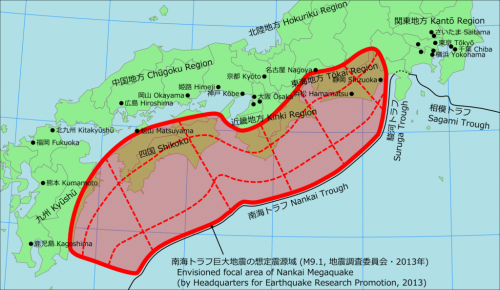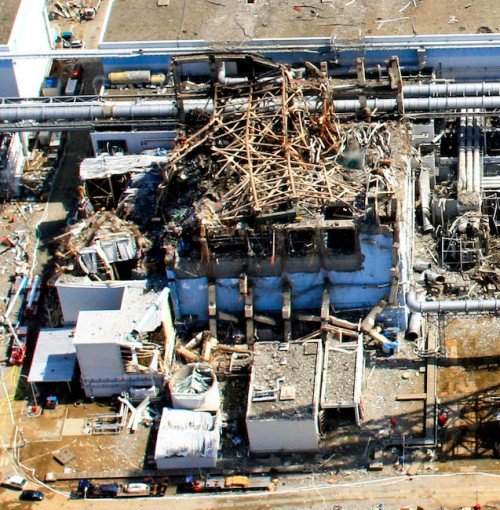Another Nuclear Plant in Japan has Reopened in One of the Most Dangerous Earthquake Zones in the World

To little fanfare and quietly the Ikata nuclear plant No.3 reactor in Shikoku, Japan restarted its operation on the 12th of August, 2016. This occurred after 5 years and 4 months being offline after it was closed down. It has been turned on and running to scale up in its processes and it is currently planned to operate commercially next month if there is no open issues. [1][2]

Since the 3.11 Tohoku earthquakes, all nuclear reactors in Japan have been stopped for maintenance, review or decommissioning purposes. Now 25 reactors (15 plants) have applied for re-operation and the Takahama plant (2 reactors) and the Sendai plant (2 reactors) have already restarted. Ikata No.3 is the fifth reactor to restart. [3]
The Ikata nuclear plant
Shikoku, where the Ikata nuclear plant is located, is an island in the South-Western part of Japan where Shikoku Electric Power Co., Inc (SEPCO) provides the electricity as a near-monopoly power and distribution company. The Ikata nuclear plant is the only nuclear plant in this whole island. There have been many protests and lawsuits between local residents and the government(s) since the beginning of its permission for construction back in 1972. The courts only warned the risk of earthquakes but dismissed the suits over and over again. [1]
The Earthquake risk
According to the recent report from the Headquarters for Earthquake Research Promotion, the location of the Ikata nuclear plant is very close to the possible main source area of Nankai megathrust earthquakes which are currently one of the greatest concerned disaster possibility zones in Japan and vigorously researched and discussed among researchers and the government(s). The Headquarters for Earthquake Research Promotion evaluated that at Nankai megathrust magnitude 8 to 9 level earthquakes come by the chance of 60% to 70% in the next 30 years. (Tohoku earthquakes in 2011 were M9.) [4]

Also there is Japan Median Tectonic Line about 6 to 8km away from the Ikata plant. That could cause magnitude 7 to 8 earthquakes. According to the researchers of Kochi University, the calculation for the safety standard for the Ikata plant is actually too soft. [5] Other researchers point out that the Ikata nuclear plants could have malfunction of the control rods, ground liquefaction, land sinking and backup power trouble by blackouts throughout the island in the worst case scenarios. [1]
Even though Ikata No.3 was reviewed and approved by the Nuclear Regulation Authority, the base of the safety regulations is questionable and there is not enough explanation for the local residents in case of evacuation or emergency measures for possible occurrences of earthquakes and/or a tsunami. [6]
Decommissioning Fukushima
On the 28th of July Tokyo Electric Power Company Holdings., Inc. (TEPCO) released the statement that they need monetary support from the Japanese government for closing the Fukushima Daiichi plant. Initially they estimated 1 trillion yen (around 10 billion US dollars) and then another trillion yen from their company. Now they realised that it will cost so much more and it will take possibly another 20 to 30 years for decommission. They have already received loans for compensation and decontamination cost from the government via a governmental organization. So far 6 trillion yen (60 billion US dollars) for compensation and 2.5 trillion yen (25 billion US dollars) estimated for decontamination. [7] And the exit scenario can’t been seen yet.

The Role of the Ikata plant
According to SEPCO, the power demand inside the island was 90-95% of the supply capacity at the peak time in the summer in 2015 which is the worst case power demand throughout the whole year. Thanks to growth of renewable energy, their supply area was totally covered by the other energy sources without the need of the Ikata nuclear power plants. [3]
Is there any particular true reason for why they pushed through the nationwide protest to re-operate it? Is it even necessary?
Ikata Nuclear Plant References in this article and the media:
[1] Wikipedia: https://ja.wikipedia.org/wiki/%E4%BC%8A%E6%96%B9%E7%99%BA%E9%9B%BB%E6%89%80
[2] NHK News: http://www3.nhk.or.jp/news/html/20160813/k10010633861000.htm
[3] Metropolitan Coalition Against Nukes: http://coalitionagainstnukes.jp/wp-content/uploads/2015/12/IKATA_front30.pdf
[4] Report by the Headquarters for Earthquake Research Promotion: http://www.jishin.go.jp/main/chousa/13may_nankai/nankai_gaiyou.pdf
[5] Kochi News: https://www.kochinews.co.jp/article/31356/
[6] BLOGOS: http://blogos.com/article/186913/
[7] The Mainichi: http://mainichi.jp/articles/20160729/ddm/008/040/043000c
[8] Japan for Sustainability: http://www.japanfs.org/ja/news/archives/news_id035369.html
This discussion is really needed. Not only in Japan, this can affect the whole world. As the Fukushima meltdown did. Well done and good research.